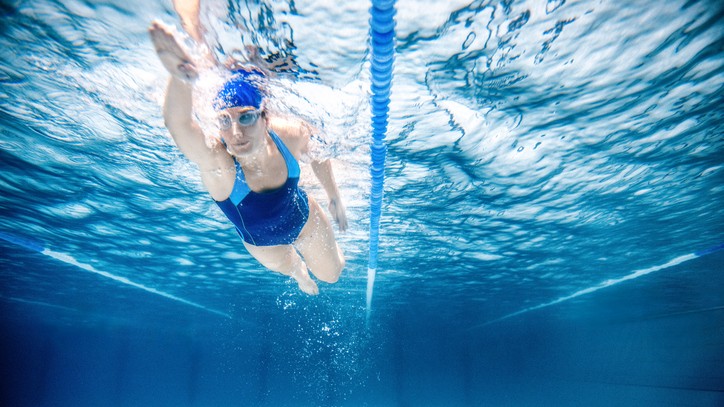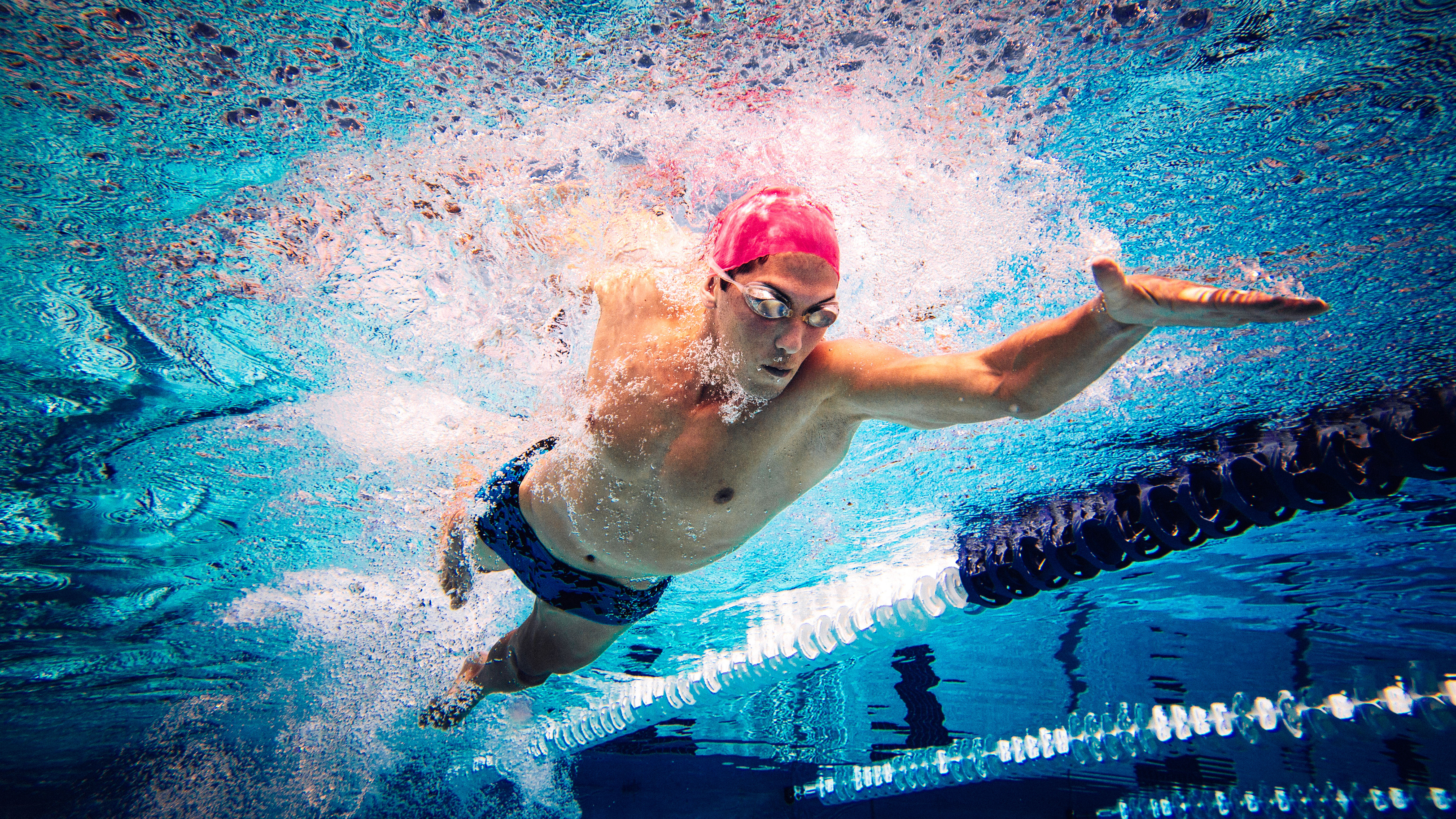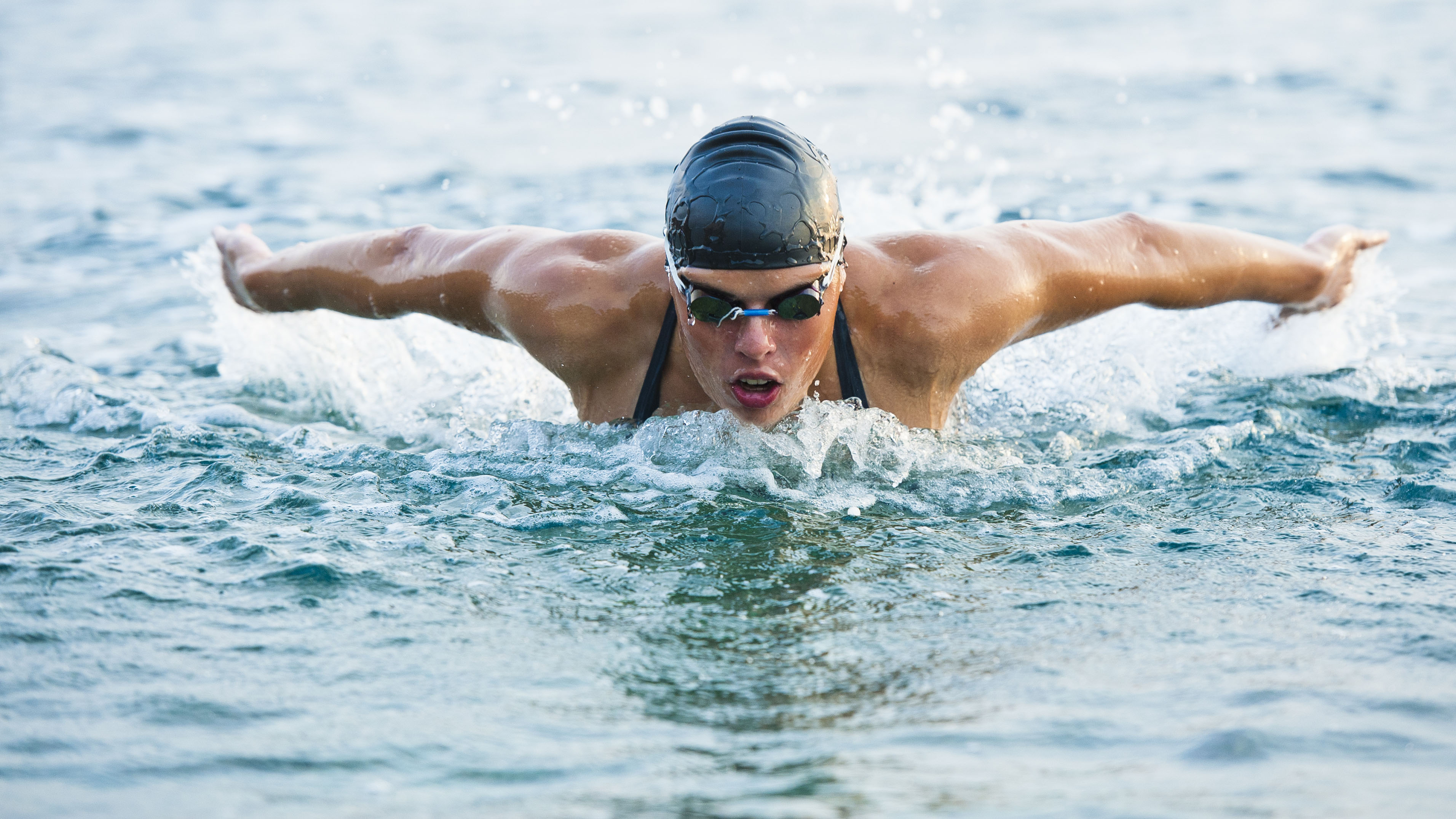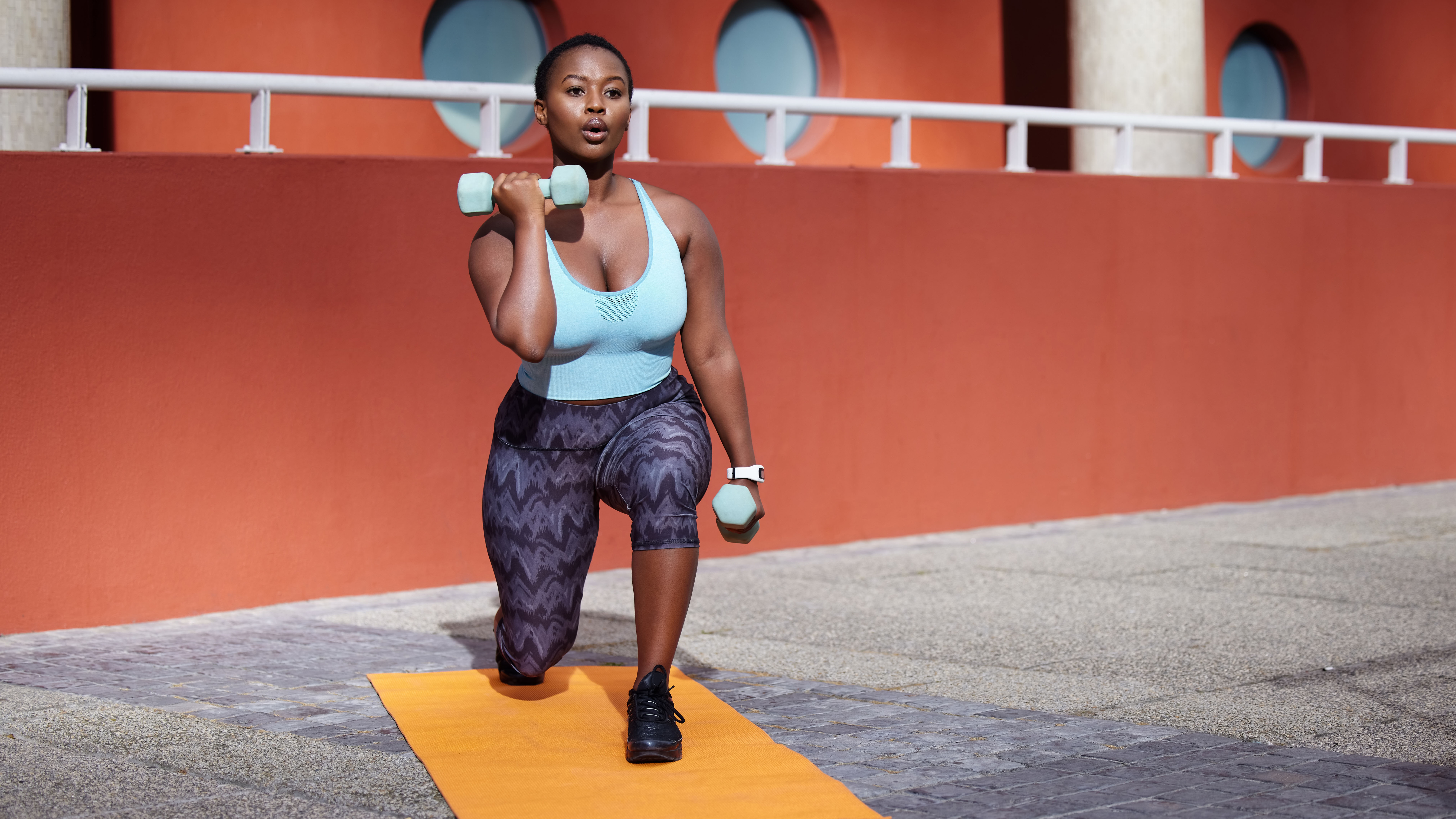Does swimming build muscle?
Does swimming build muscle? Work multiple muscles with this joint-friendly, full body workout

If you’re wondering: does swimming build muscle, then the short answer is yes, but you may need to include other types of training if you’re looking to get ‘ripped’, and learn about your muscle fiber types, too.
Swimming is essentially a type of resistance training, with the water providing ‘resistance’ as you try to propel yourself forwards. As with all resistance exercises, repeatedly doing this will eventually lead to positive muscular adaptations (read: you’ll get stronger.) But if you want to get bigger muscles, you might need to add in some greater forms of resistance.
We spoke with a physiotherapist to find out exactly how swimming builds muscle, which muscles different strokes target and how you can up the intensity for faster gains.

Tracy Ward is a qualified physiotherapist, who has years of experience working with clinical patients and sports groups. She's also a Pilates teacher and the founder of Freshly Centred.
Does swimming build muscle?
As outlined above, swimming will have positive effects on muscles if done for a long enough period.
Physiotherapist Tracy Ward, from Freshly Centered, says: “Swimming is exercise against water resistance, and any form of exercise against an external resistance will build muscle.”
“Muscle is built with swimming by the resistance of the water and the effort required to generate propulsion through the water. Swimming alone however would only build muscle in a finite manner.”
This means that it’s possible to plateau with your muscle growth if swimming is your primary form of exercise. To combat this, Ward suggests increasing the quantity of your training, which would mean swimming more frequently or for longer periods of time.
Alternatively, you could grab a pair of the best adjustable dumbbells and start doing some dedicated weightlifting sessions alongside your swimming routine.
- Read more: How to gain muscle
- Read more: What's the best swim stroke for burning calories
Which muscles does swimming target?

As a full body workout, swimming works almost every muscle in the body and can give you a more balanced, athletic figure than weight training.
It’s also low impact – so puts less strain on joints and bones.
Ward says: “The main muscle groups involved in swimming are the gluteals (buttocks), which are responsible for the leg actions in all strokes. The gluteus maximus – the largest of the butt muscles – is the main driver for hip extension and power propulsion. The latissimus dorsi muscle (back) drives the upper arm motions and most of the pulling.
“The deltoids (shoulders), biceps (front of arms), triceps (back of arms) all assist in the upper body strokes. The pectorals (chest), quadriceps (front of thigh), hamstrings (back of thigh) function in all leg motions, while the calves (lower leg) point the ankles.”
Do different strokes target different muscles?
All swimming strokes give the body’s main muscle groups a good workout, from the abs, back, forearms, shoulders, hamstrings and glutes. But mixing up your strokes will further target specific muscle groups, says Tracy.
“The latissimus dorsi (a muscle on the back of the body) drives the upper limb pull and overhead actions, and assists with pectorals and deltoids. The glutes are heavily involved in all strokes, as are the quadriceps and hamstrings.
Breaststroke: “The more dominant muscles are the hip and leg ones, particularly the hip abductors, which move the legs away from the body and the hip adductors bring them back together. The chest muscles help the swimmer to initiate the stroke.”

Butterfly: “This stroke has a greater emphasis on the upper body, so the latissimus dorsi, deltoids and upper trapezius (around neck and upper shoulder) as the arms expand overhead in such a huge range of movement. The pectorals are dominant in bringing the arms in towards the body from overhead. The hip flexors and quadriceps perform the hip flexion (flexing) motion, while the glutes and hamstrings counteract this with hip extension (opening).
Backstroke: “This stroke relies heavily on the latissimus dorsi again, as well as the deltoids and triceps (back of arms), which assist the upper body. The quadriceps (front thigh) and pectorals (chest) work especially hard to keep the swimmer afloat.”
Front crawl: “A blend of all the muscles are used in front crawl, but the body is more reliant upon the long arm and leg levers to generate power. A strong core is essential for this stroke, and as with most swimming styles, latissimus dorsi, pectorals, glutes and the hamstrings are heavily involved.”
How much swimming do you need to do to build muscle?
This depends on your base fitness level, says Ward.
“If you’re new to swimming, or exercise, this activity will build muscle faster because the body is being overloaded with a greater resistance than it is used to,” explains Ward.
“Regardless of fitness levels, the high number of repetitions of swim strokes mean the muscles are exposed quickly to resistance and will build muscle.
“But regular swimmers would need to continue to up their training regularly or add some form of additional strength training to continue to build muscle further.
“This is because strength gains occur when the body is under ‘progressive overload’, so if you want to see improvement in muscle mass (or hypertrophy) you need to train regularly – around three times a week for eight to 12 weeks.
“This allows time for the muscles to sustain micro trauma – tiny tears in the muscle fiber – from the exercise. These tears in the muscle then repair and grow as a result. The more this happens, the stronger the muscle becomes.”
What other exercise, alongside swimming, should you do to build muscle?

A mix of aerobic (cardio) and strength training alongside regular swimming will help to build muscle.
“Strength or weight training is by far the best way to complement swimming to build muscle,” says Ward. “This allows you to grade the amount of weight lifted, and progressively increase the weight, to then increase the muscle.
“Strength training also increases bone density and builds stronger bones, which can then assist muscles as they pull on the bone to function. Swimming is a non-impact, anti-gravitational sport, whereas bone strength, and in turn muscle strength, is built through impact and gravity. So for maximum performance, swimmers need to strength train.”
Swimming when combined with strength work (known as concurrent training) resulted in better sports performance than without, found a study published in the peer-reviewed journal International Journal of Environmental Research and Public Health.
Ward says: “This highlights that in order to improve performance, and build muscle, swimmers need to do strength training.”
“Core exercises, such as Pilates, should also be incorporated to ensure a strong trunk and stable center point from which the upper and lower limbs move,” says Ward.
“The stronger the core, the more the limbs can move and generate power through the arms and legs. Increased power translates to greater speed and performance.”
Sign up for the Live Science daily newsletter now
Get the world’s most fascinating discoveries delivered straight to your inbox.

Maddy Biddulph is a freelance health and fitness journalist with over 26 years of experience working for consumer media in the US and UK. As a Level 3 personal trainer and weight loss advisor she is used to trying out and reviewing the latest health and fitness products. At Maddy Biddulph Personal Training, she runs one-to-one and small group sessions, as well as group exercise classes. She specializes in mobility work with seniors and runs regular chair workouts in her hometown of Oxford.










